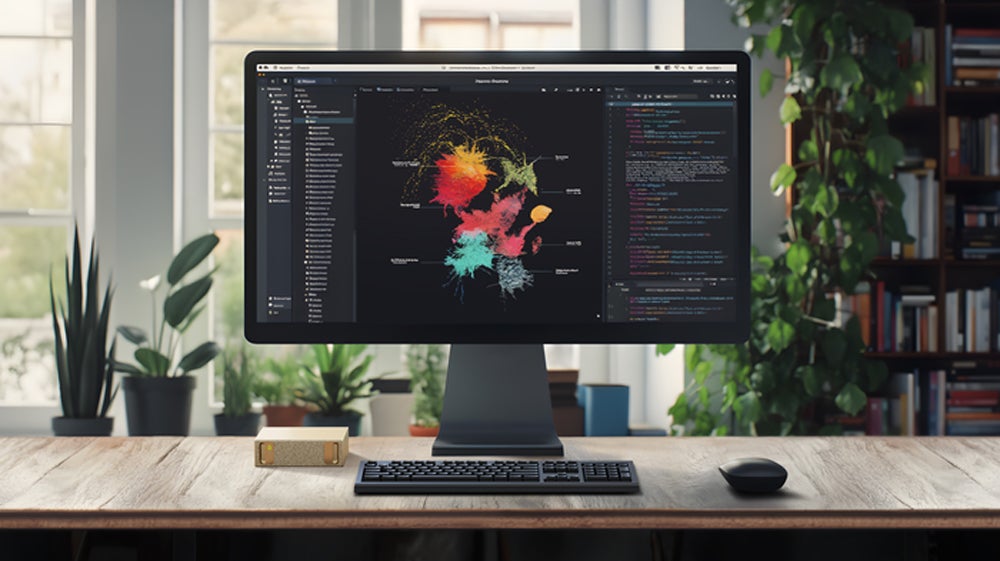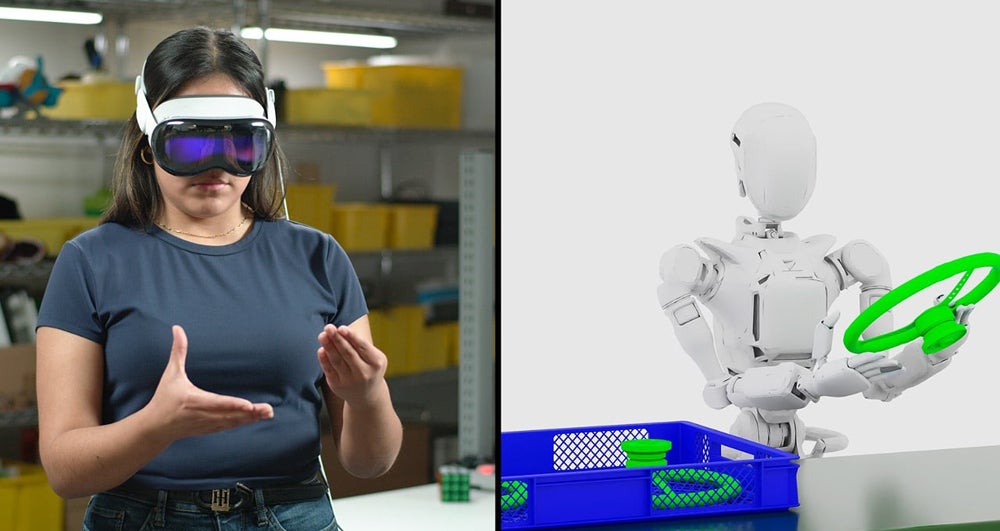
Check out our latest products
NVIDIA made a host of new announcements through a keynote speech from its CEO delivered at CES 2025 in Las Vegas on Monday.
The main event was the GeForce RTX 50-series, the company’s first flagship desktop GPU offering in over two years. The graphics cards are powerful enough to run AI models and can multiply gaming frame rates by up to eight times with DLSS 4 neural rendering technology.
Additionally, Jensen Huang, wearing his signature leather jacket, unveiled a new NVIDIA supercomputer for AI researchers, a modality for humanoid robots that allows them to learn by imitation, a world foundation model platform, and a partnership with Toyota for autonomous vehicles.
GeForce RTX 50-series desktop GPUs
The most advanced of the new GeForce series is the RTX 5090, with 92 billion transistors and delivering 3,352 trillion AI operations per second.
“The GeForce RTX 50 Series delivers breakthroughs in AI-driven rendering, including neural shaders, digital human technologies, geometry and lighting,” NVIDIA claims in a press release.
The RTX 5090 will start at $1,999, marking a $400 increase over its predecessor, the RTX 4090, but it is also twice as fast. The RTX 5080 delivers 1,800 TOPS and will start at $999. Both will be available from Jan. 30.
The RTX 5070 Ti provides 1,400 TOPS, similar to the RTX 4090, and will cost $749. Meanwhile, the RTX 5070 offers 1,000 TOPS at $549. Both will be available in February.
Acer, ASUS, Dell, HP, Lenovo, and Razer have designed laptops that include the new RTX 50-series. Devices featuring all chips will be available in March except for RTX 5070 laptops, which will launch in April.
“Fusing AI-driven neural rendering and ray tracing, Blackwell is the most significant computer graphics innovation since we introduced programmable shading 25 years ago,” Huang said in the speech.
Personal supercomputer for AI researchers
On top of the new chip series, NVIDIA introduced the world to its personal AI supercomputer; Project DIGITS. This is intended to be used by AI researchers, data scientists, and students to “supercharge AI innovation,” according to NVIDIA.
The DIGITS computer contains the GB10 Grace Blackwell superchip, composed of a GPU and 20-core CPU, which delivers up to a petaflop of computational power. It can run large language models of up to 200 billion parameters — the number of parameters is generally proportional to performance capacity.
Complete with 128GB of memory, up to 4TB of flash storage, and NVIDIA’s DGX operating system, the computers will be available in May. It will start at $3,000.

Imitation capability for humanoid robots
In March 2024, NVIDIA unveiled GR00T — a general-purpose foundation AI model for humanoid robots. At CES 2025, Huang announced a new modality, or blueprint, for GR00T that allows it to learn by imitation.
In other words, individuals will be able to act out movements they want the robot to perform, it will capture them as a digital twin, and then execute them repeatedly. This can all be done using an Apple Vision Pro headset.
The idea is that the technology will make it easier to educate large fleets of robots deployed in manufacturing settings. “Physical AI will revolutionize the $50 trillion manufacturing and logistics industries. Everything that moves — from cars and trucks to factories and warehouses — will be robotic and embodied by AI,” Huang said.
This new blueprint complements the blueprint for Real-Time CAE Digital Twins launched in November, which facilitates the creation of interactive simulations for engineering applications. Both leverage NVIDIA’s Omniverse platform for real-time 3D collaboration.
In addition, Huang unveiled other blueprints that can build custom AI agents for enterprises with NVIDIA NIMs: microservices containing the APIs, domain-specific code, optimized inference engines, and enterprise runtime needed to run generative AI. He also announced the Llama Nemotron family of open large language models to assist with creating and deploying agents. TechRepublic predicted at the end of the year that the use of AI agents will surge in 2025.

World foundation models for robotics
Huang announced a new platform for “world foundation models.” These AI models are inspired by how humans form their mental models of the world, called Cosmos. The first Cosmos models released are designed specifically for robotics, focusing on “physics-based simulation and synthetic data generation.”
“Cosmos WFMs are purpose-built for physical AI research and development, and can generate physics-based videos from a combination of inputs, like text, image and video, as well as robot sensor or motion data,” according to NVIDIA.
SEE: NVIDIA: Blackwell Architecture Will Accelerate AI Products in Late 2024
They will all be trained on 9,000 trillion tokens, or pieces of video data, including 20 million hours of data from autonomous driving, robotics, human interactions, and other domains. Companies such as Uber and Wayve have already committed to using Cosmos models for use cases including self-driving vehicles.
The Cosmos models will be available publicly through NVIDIA, GitHub, and Hugging Face.
Autonomous driving partnership with Toyota
Finally, Huang announced a new partnership between NVIDIA and Toyota to develop next-generation autonomous vehicles. Toyota’s upcoming models will incorporate NVIDIA’s DRIVE AGX Orin supercomputer and DriveOS operating system.
This news comes shortly after autonomous vehicle companies Aurora and Continental announced a partnership to scale up the deployment of driverless trucks using NVIDIA DRIVE. Huang projected NVIDIA’s automotive revenue to reach $5 billion in his keynote.
“The autonomous vehicle revolution has arrived, and automotive will be one of the largest AI and robotics industries,” he said in a press release.


![[5G & 2.4G] Indoor/Outdoor Security Camera for Home, Baby/Elder/Dog/Pet Camera with Phone App, Wi-Fi Camera w/Spotlight, Color Night Vision, 2-Way Audio, 24/7, SD/Cloud Storage, Work w/Alexa, 2Pack](https://m.media-amazon.com/images/I/71gzKbvCrrL._AC_SL1500_.jpg)



![[3 Pack] Sport Bands Compatible with Fitbit Charge 5 Bands Women Men, Adjustable Soft Silicone Charge 5 Wristband Strap for Fitbit Charge 5, Large](https://m.media-amazon.com/images/I/61Tqj4Sz2rL._AC_SL1500_.jpg)





